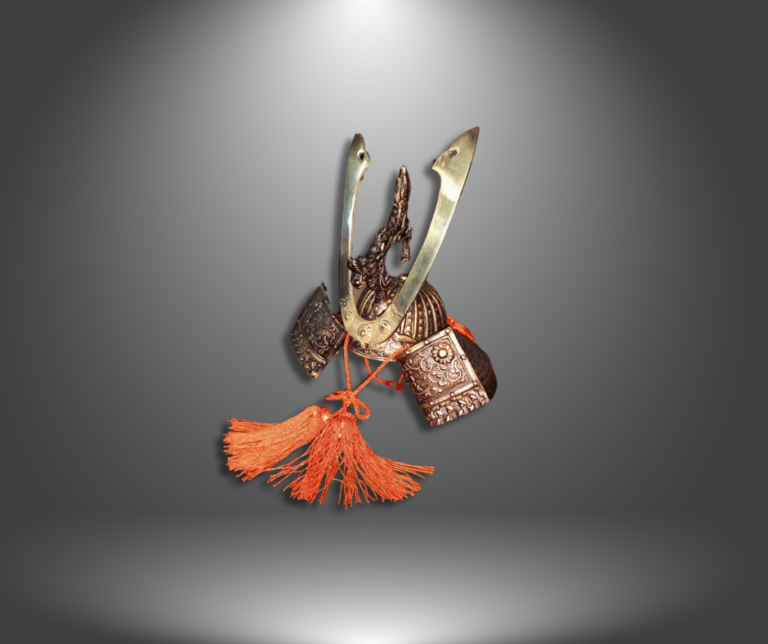The helmet is a ceremonial piece traditionally displayed to celebrate Boy’s Day on May 5th—now known as Children’s Day. The event’s origins date back to Tango no Sekku, an ancient festival where families wished for the health and bravery of their boys, emulating the valor of samurai.
The meticulous design, featuring the robust yet elegant materials of iron and brass, demonstrates the helmet’s significance and the skill involved in its creation. Such pieces are often adorned with stylized motifs and heraldic symbols to inspire strength and honor among young boys.
Additional Details
Artist/Creator/Factory: unknown
Dimensions: Height 31 cm, Width 30 cm
Material: Iron, Brass
Year: Vintage
Origin: Japan
